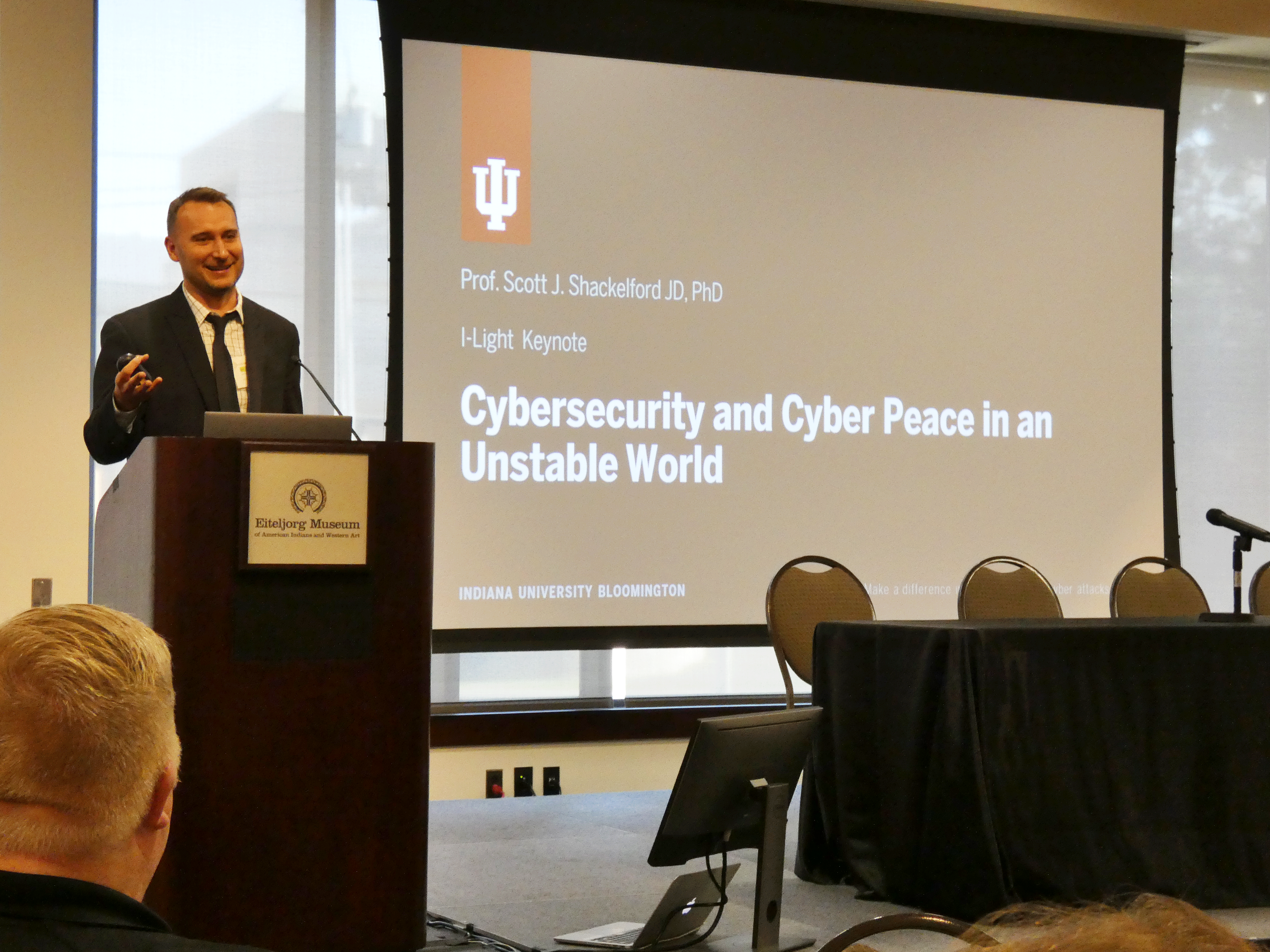For I-Light and the Indiana GigaPOP, 2022 was a year of marked improvements from the previous two years.
We moved out of pandemic mode and back into face-to-face meetings and feeling more like things were back to “normal.” The Indiana GigaPOP and I-Light networks held their annual members meeting at the Eiteljorg Museum, located in the cultural center of Indianapolis, White River State Park. It was the first in-person meeting since 2019! The turnout was fantastic, and everyone was glad to be back in person for these meetings, making the pandemic seem even more of a memory. A highlight was hearing from our keynote speaker, Scott Shackelford, who spoke on "Cybersecurity and cyber peace in an unstable world." Shackelford serves as executive director of IU's Center for Applied Cybersecurity Research, among other duties.
The networking engineering team upgraded Indiana GigaPOP’s connectivity to the Internet2 network to 2 x 400G and increased resiliency with redundant links from Indianapolis to Chicago at 400G. Our commodity usage continues to increase as does the demand for more bandwidth from our members, and we increased our commodity providers up to 60G between three diverse providers. We upgraded the Indiana PBS members with new Juniper SRX345 routers in our continued support of multicast for the public broadcasting service. Meanwhile, several members asked for redundant connectivity ensuring resiliency for their institutions. We added another PBS station to the network with WBAA out of Lafayette, Indiana.
I-Light and the Indiana GigaPOP continue to support the research mission of our members. For example, in June 2022, the University of Notre Dame Turbomachinery Laboratory (NDTL) completed new test cells for research, development, and testing of hypersonic propulsion systems. According to the news release, “National interest in hypersonic flight has intensified in recent years. Getting passenger planes to travel at Mach 6 speed — six times the speed of sound — would revolutionize air travel. Passengers would be able to fly from Washington, D.C., to Los Angeles in under an hour, New York to London in less than two hours and Los Angeles to Tokyo in under four hours.” We’re proud to support research like NDTL, and they drive our networks’ demand for even more capacity.
To ensure the community has access to cutting-edge capabilities, the I-Light and Indiana Gigapop networks are also supporting the efforts to install, maintain, and manage the IU FABRIC node that will connect from Bloomington, Ind., to Chicago. The FABRIC network is funded by the National Science Foundation and supports experimental deployment, protocol testing, and evaluation.
Security is top of mind for our members, and we’re thrilled that the rollout of cybersecurity services via OmniSOC has been a tremendous success. Many members have taken advantage of OmniSOC’s tabletop exercises to examine the vulnerabilities on their campuses and learn how to mitigate weaknesses.
We look forward to another successful year, helping our members reach their goals, establish new opportunities, and accelerate research and discovery.



